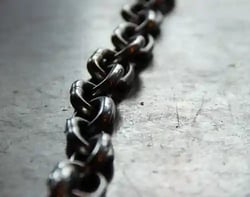CANSFORD LABS
UK Insights: How to Secure the Chain of Custody in a Hair Drug Test
on May 12, 2016
 When the decision of a Family Court rests on the results of a hair drug test, mistakes can’t afford to be made. That’s why it’s frustrating when you’re tasked with ensuring a legitimate hair test is carried out, only you’re not sure what’s the best way to do this.
When the decision of a Family Court rests on the results of a hair drug test, mistakes can’t afford to be made. That’s why it’s frustrating when you’re tasked with ensuring a legitimate hair test is carried out, only you’re not sure what’s the best way to do this.
If the chain of custody for a hair drug test is compromised, it could mean delays in a Family Law case. Worse still, a parent/guardian could unfairly lose access to their child.
Here are 3 ways to safeguard the chain of custody and ensure the results of a hair drug test can hold up in court.
Get a trained professional to take the sample
When you call a lab to get a quote for a hair drug test, they often ask ‘do you want to take the sample yourself?’. Unless you go to a GP, trained phlebotomist or otherwise medical professional, your answer should be ‘No’.
Whoever takes the hair sample has a responsibility to ensure the sample doesn’t get contaminated or incorrectly taken. Although hair testing for drugs is much harder to cheat compared to blood or urine testing, it doesn’t mean people haven’t tried including attempting to submit hair from a hair piece as a sample!
This is why labs will suggest their trained collectors or a GP (if they’re willing) take the sample. For example, at Cansford Laboratories our collector will wrap the sample in foil and seal it with tamper-evident seals that should remain unbroken when the sample reaches the lab. The sample can then pass safely through the post to the lab.
Confirm the donor’s identity and ensure a witness is present
There should be no question the hair sample was taken from the right person. That’s why official ID, including photo ID of the donor should be provided when the sample is taken.
During the sampling process it’s a good idea to have a reliable witness (i.e. Family Lawyer, Social Worker) present to observe the sample being taken. It’s another safeguard to the chain of custody as the witness will sign documentation verifying the validity of the sampling procedure.
This proves to a court that at the start of the process, the chain was verified and the sample came from the right donor.
Analysing the sample
Unfortunately, unless you’re a lab technician you’re not allowed to look behind the curtain and see how the sample is being analysed. However, you can still gain access to information detailing the analysis procedure of the sample.
Family Lawyers can request a witness statement that details everything that happened in the lab during analysis. This can be used to make sure the analysis procedure was legitimate and not compromised.
For example, a typical process in the lab would start with a technician checking the seals and confirming that nothing happened to the sample in transit. The sample can then be opened, and alongside booking in who the donor is and what drugs need to be tested, the lab can then prepare the sample for analysis.
As the sample passes through the lab, it can be tracked by the laboratory information system right from start to finish, including where it came from and where it’s going.
Ultimately, making sure the chain of custody for a hair drug test remains uncompromised is a top priority. A few ways to achieve this include getting a trained professional to take the sample, confirming the identity of the donor with a witness present, and requesting a witness statement to verify the legitimacy of the analysis of the sample in the lab.

Lolita Tsanaclis
Dr. Lolita Tsanaclis, Chief Scientific Officer of Cansford Laboratories Limited, has been developing methods for the analysis of drugs in hair since 1993. She has been involved in drug testing using hair, blood and oral fluid samples for medico-legal and workplace sectors for over three decades. Dr Tsanaclis is published extensively as author and as co-author in highly regarded peer-reviewed publications and scientific presentations.
